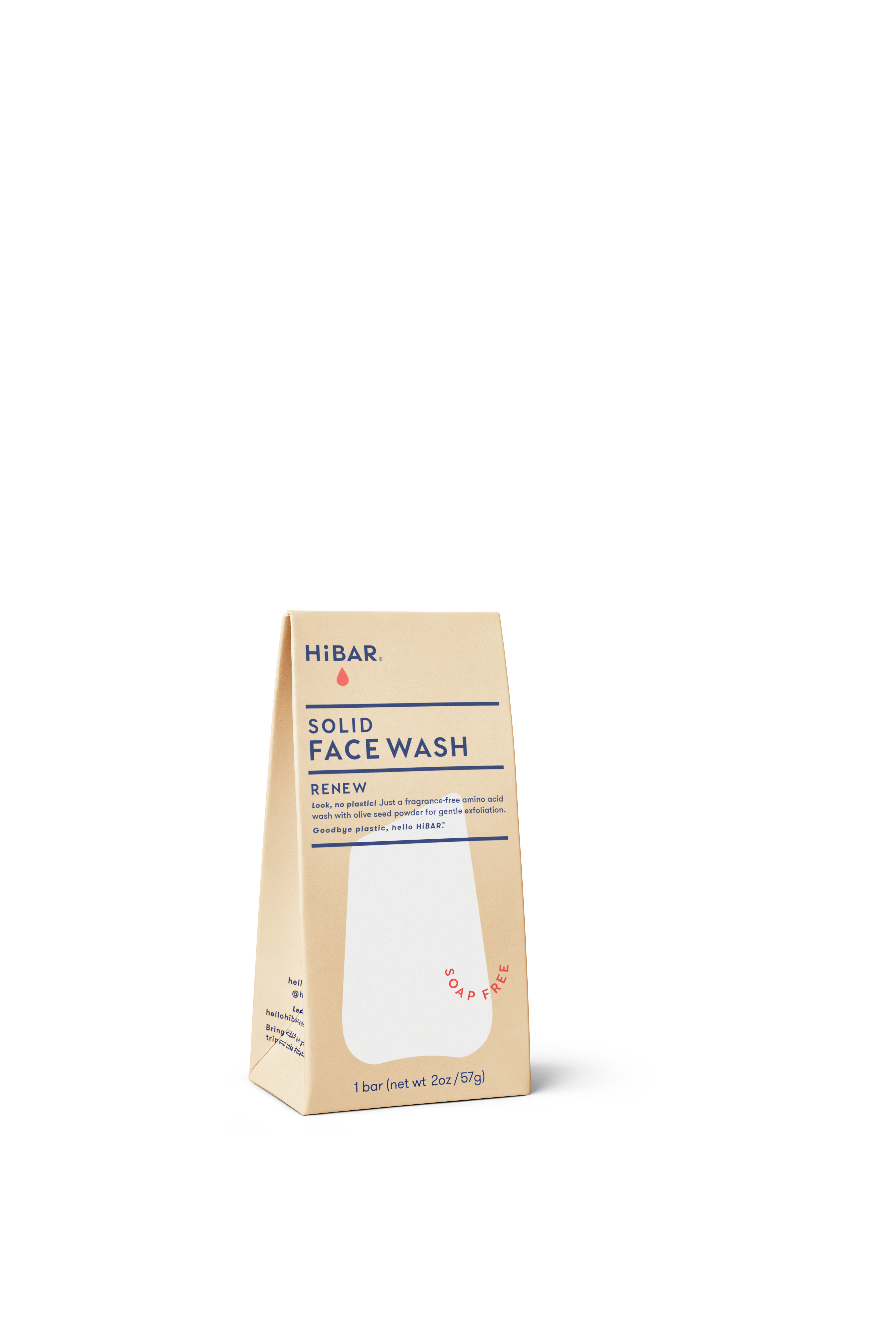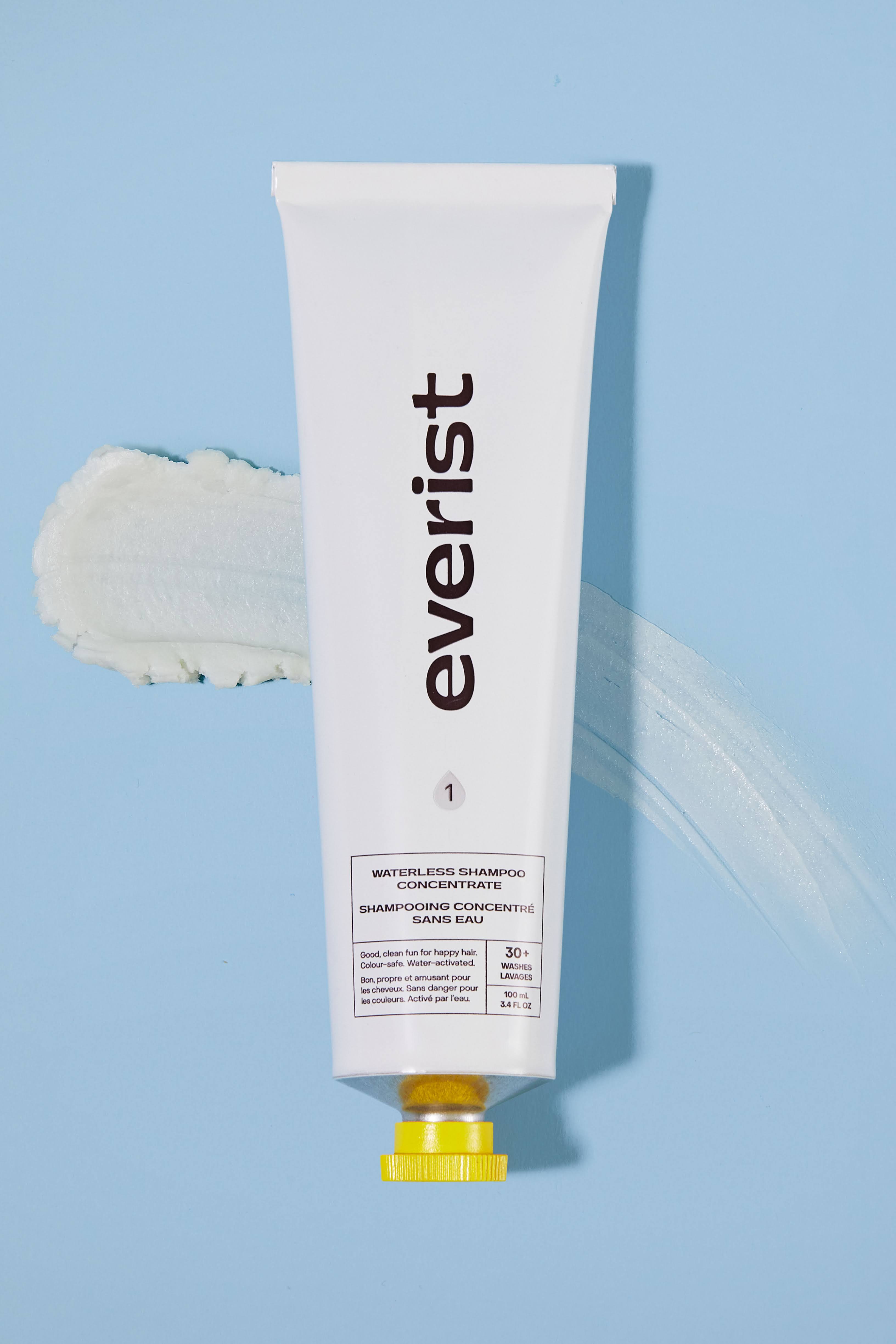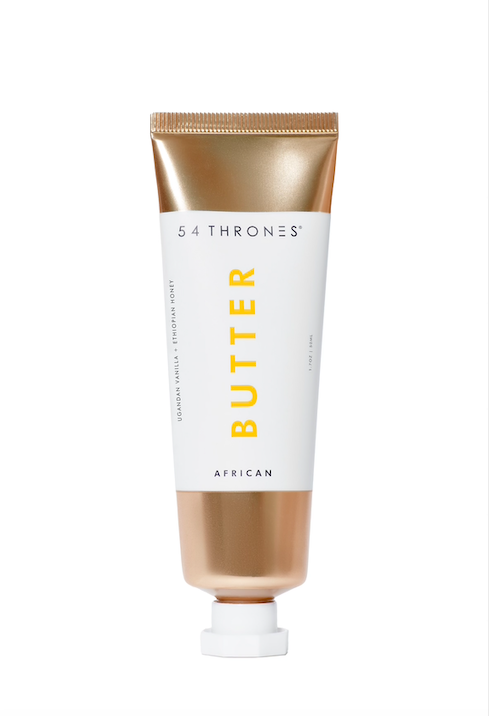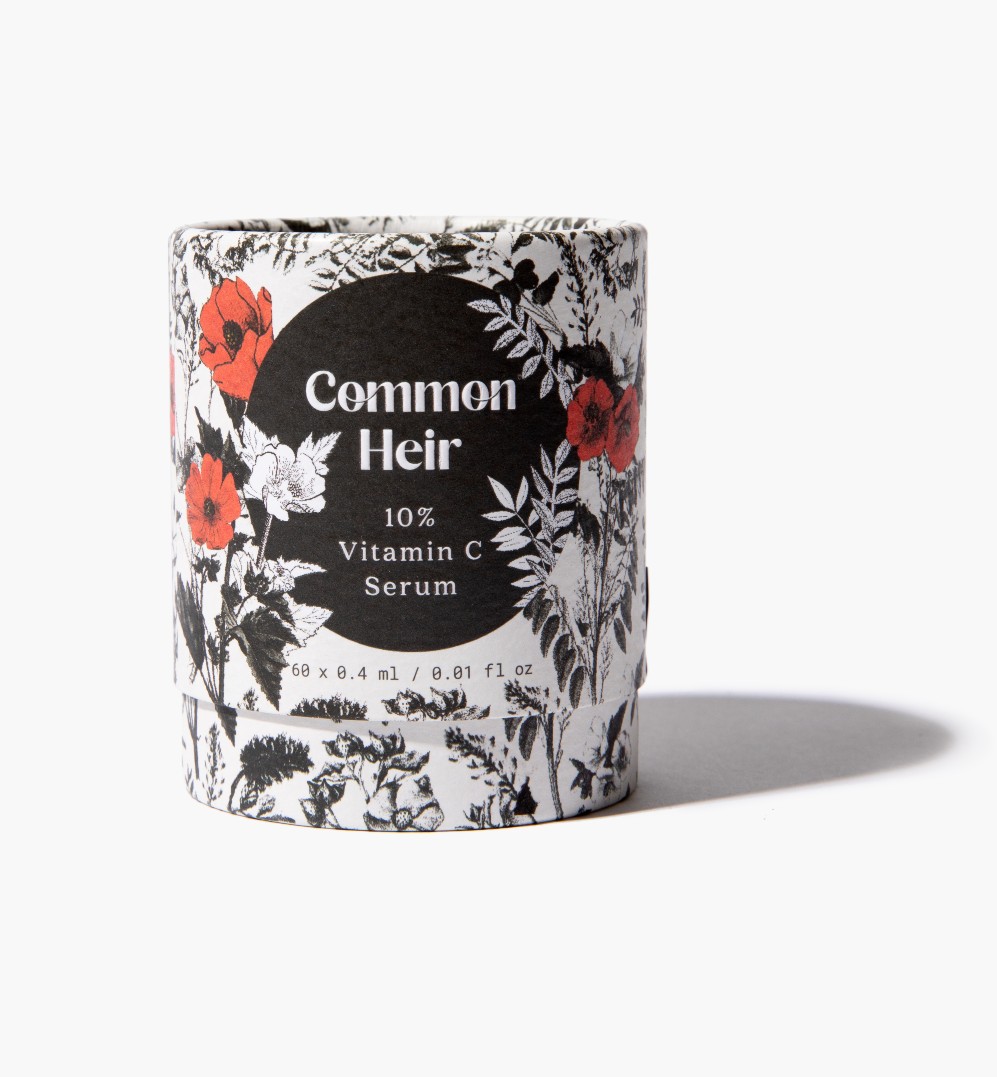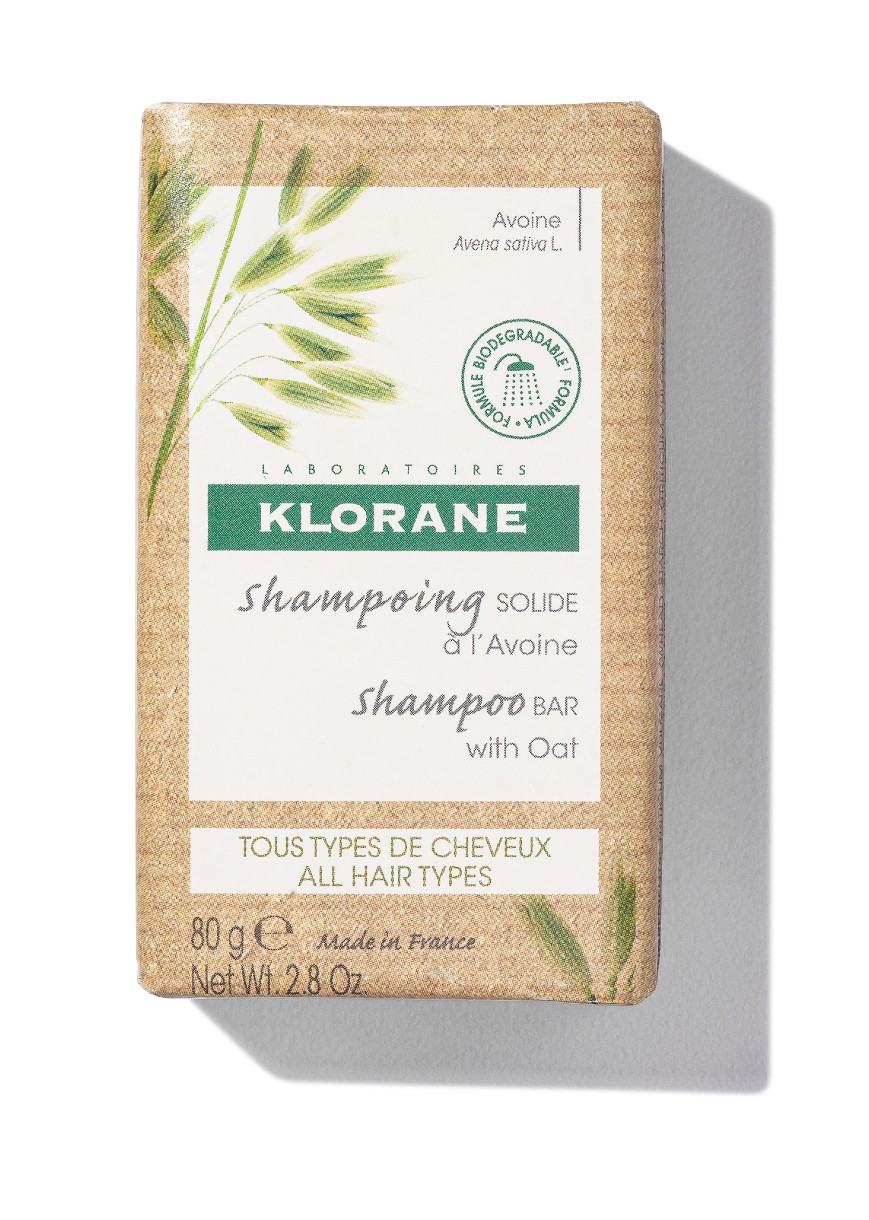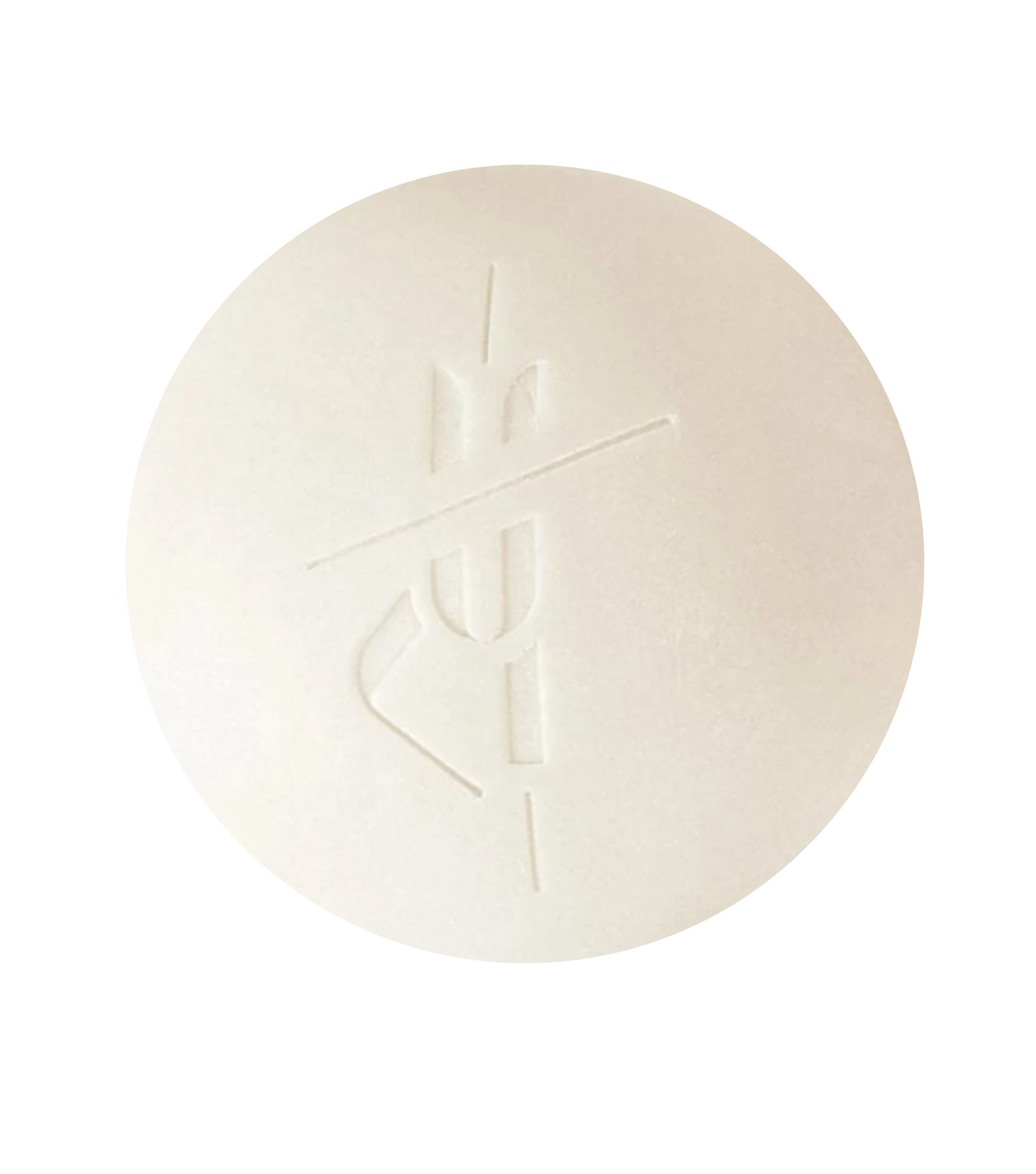Is the Humble Bar of Soap the Future of Beauty?
Bars, powders, and concentrates are the beauty world’s latest obsession. Here's why everyone's going "waterless."


Once upon a time, water took the top spot in nearly all beauty formulas. Whether the product in question was designed for skin, hair, or makeup, it didn’t matter— good old H2O was the first component on the ingredient list, where it was beloved for its user-friendly emulsions, non-sticky finish, and satisfying suds.
But the tides have turned. Brands are increasingly creating products without water and relying instead on butters and oils to deliver results. This shift has a ton of eco-potential, cutting back on waste, and—of course—water itself.
Despite their recent rise, the bars, powders, and concentrates that fill today’s shelves aren’t exactly new. In fact, the first shampoo bars debuted back in 1987, courtesy of Lush cofounder Mo Constantine and cosmetic chemist Stan Krysztal. There have always been “anhydrous products, or those ‘without water,’ such as face and body oils, balms, sticks, and powders,” says cosmetic chemist Marisa Plescia, research scientist at clean beauty retailer NakedPoppy. “But over the past few years, we have seen this category expand with fresh ideas and concepts.”
Rather than rebranding products that never had water in them to begin with, brands are developing water-free versions of traditionally water-based formulas, such as cleanser and conditioner.
Logistics plays a part in its rise, too. As consumers have largely moved from shopping shelves to scrolling pages, products have adapted accordingly. While companies used to compete for shelf space with bright, oversized bottles, Jenkins says, “shipping water around the world no longer makes sense.” Take water out of the equation and you’ve got yourself a smaller, more lightweight product to transport, which may translate to cost savings. (It’s hard to say, however, whether brands pass those savings on to consumers. Plus, “the cost of anhydrous materials can [actually] be higher,” says Plescia. “Water is cheap, while waxes, oils, butters, and powders are often not.”)
Ultimately, though, it comes down to supply and demand: Sustainability is finally having its moment in the sun—and forgoing water in a given product can create a domino effect of environmental benefits throughout its lifecycle. “In the last couple of years, consumers have become increasingly aware of the need to protect natural resources broadly and be more conservation-minded with water in particular,” says Mia Davis, vice president of Sustainability & Impact at Credo Beauty, a clean beauty retailer. And where consumers go, so do companies. “It's becoming more and more apparent to investors and companies that the manufacturing of products—and the disposal of them—have a huge impact on our younger consumers,” says Boma Brown-West, director of consumer health at the Environmental Defense Fund. The cosmetics industry is responsible for an estimated 120 billion beauty packages produced each year alone—most of which never gets recycled. “It's important that companies are recognizing that they have an environmental footprint and that they're actually taking action on it.”
Size, in this case, does matter. Since water equals volume, waterless beauty products are literally smaller than their traditional counterparts, and that can have an eco-friendly ripple effect. “Because you're reducing the size of a product, you're invariably reducing the amount of packaging needed,” says Brown-West. That could dramatically limit the item’s total carbon footprint. “A smaller product means more room on the truck to fit more products in,” she explains. “This can help reduce the amount of fuel that's being used to transport each product.” It can also shrink the amount of emissions, like carbon and air pollutants.
Get exclusive access to fashion and beauty trends, hot-off-the-press celebrity news, and more.
Then, there’s the recycling advantage. Some waterless products, such as solid bars, allow for more seamless recycling down the line. “If the result of making a product waterless reduces the need for smaller components, like caps, or materials that aren’t accepted by recycling programs, like pumps with metal parts, then there could be a benefit,” says Karen Hagerman, director of the Sustainable Packaging Coalition.
That’s what led entrepreneur Kate McLeod to seek out an alternative packaging for her eponymous line of solid moisturizer bars, which she calls stones. “Our solid formula forced me to look at packaging differently,” says McLeod, who ultimately went with a bamboo holder that’s both pretty and durable enough to be reused.
Speaking of the (environmental) devil—that’s plastic—waterless formulas make it possible to package products without the stuff at all since, depending on the formula, there’s less concern around dripping or leaking. That’s what drove the creation of HiBar, a plastic-free line of hair- and skin-care bars. “We looked at different product forms, like dissolvables and refillables, and concluded that our best chance at providing our customers with a high-quality product was simply eliminating water from the formulation,” says Dion Hughes, a cofounder of the brand. And that’s a big deal, seeing as fossil fuels are the main ingredient in plastic production. Roughly 91 percent of plastic never gets recycled, leading it to pile up endlessly in oceans and landfills.
Another perk: Preservatives aren’t really needed. After all, bacteria live their best lives splashing around in a water-rich environment; conversely, “in anhydrous formulas, the bacteria have a more of a difficult time growing since there is no water, so this risk is lower,” says Plescia. And fewer preservatives are a good thing, Jenkins adds, since “everything we use in our shower goes down the drain and into our water systems.”
These are all promising, environmentally sound reasons to swap your shampoo bottle for a bar. That said, it’s important to think about these things in context—not all water-free formulas are created equal. “A waterless product does not necessarily mean that the formula is more sustainable, that it took less energy or carbon to make, or has a great safety profile,” Davis explains. “Water is one major piece of the more-sustainable-product puzzle, but ‘waterless’ products may or may not be better for the environment or for you, the user.”
Part of that is because, while H2O might be out of the picture, there’s a whole lot of other stuff still in it. “With higher levels of other ingredients, the sustainability of those ingredients themselves can be brought into question,” Plescia explains.
Plus, Davis stresses that if you’re taking hour-long showers and drinking from single-use plastic water bottles, choosing a waterless beauty product won’t count for much. “Waterless beauty can be great, but it is not going to solve the water crisis,” she says.
Putting a pin in the sustainability conversation for a second, waterless beauty products have a host of other pros, like payoff in terms of potency and convenience. They tend to be more concentrated—meaning they’re packed with more nutrients, vitamins, and other beneficial compounds. “What I noticed from visiting different African communities is that the herbs, oils, and butters were all so rich and pure,” says 54 Thrones founder Christina Funke Tegbe, whose beauty line is rooted in waterless body butters. “A little truly went a long way. So the advantage is a more concentrated, efficacious product that goes further, because no water is used to cut it down.” And frequent fliers, behold: Some waterless products can be a dream for travel, eliminating a step in the always-anxiety-inducing TSA line.
Yet there’s still some downside to these amped-up formulations. One big consideration? The texture. While emulsions, like your average lotion, can feel smooth and satiny upon application, “an anhydrous formula, such as a balm, can be heavier with a sometimes-greasy feeling, which may not be desired by some consumers,” says Plescia.
Before you add a product to cart, do your research on the brand itself. For one, there’s always the risk of oversight in an industry that’s historically left women of color behind, notes Brown-West, who adds that waterless brands need to take women of color’s specific needs into account when formulating products. (For example, some brands only offer a single shampoo bar option—instead of considering all hair textures, including natural hair, when making them.) Also worth keeping in mind: The potential for greenwashing, a.k.a. the false implication that a company is more environmentally conscious than it is, is high wherever sustainability is involved. Some products have always been waterless, Hagerman says, (think powdered blush) and branding them as “waterless” is just a way to cash in on the hype.
Nuances notwithstanding, experts and founders agree waterless products are a net-positive development for the beauty industry—and definitely better than buying products consisting of non-recyclable packaging filled with non-sustainable ingredients. While they may take some getting used to, it’s worth the effort. As Jenkins puts it: “In the end, your hair and the planet will thank you.”
This story appears in the May 2022 issue of Marie Claire.

Click above to read the full issue.
Deanna Pai is a freelance beauty and wellness writer and editor based in New York; her work has appeared in Vogue, Vanity Fair, New York Magazine, and many others.
